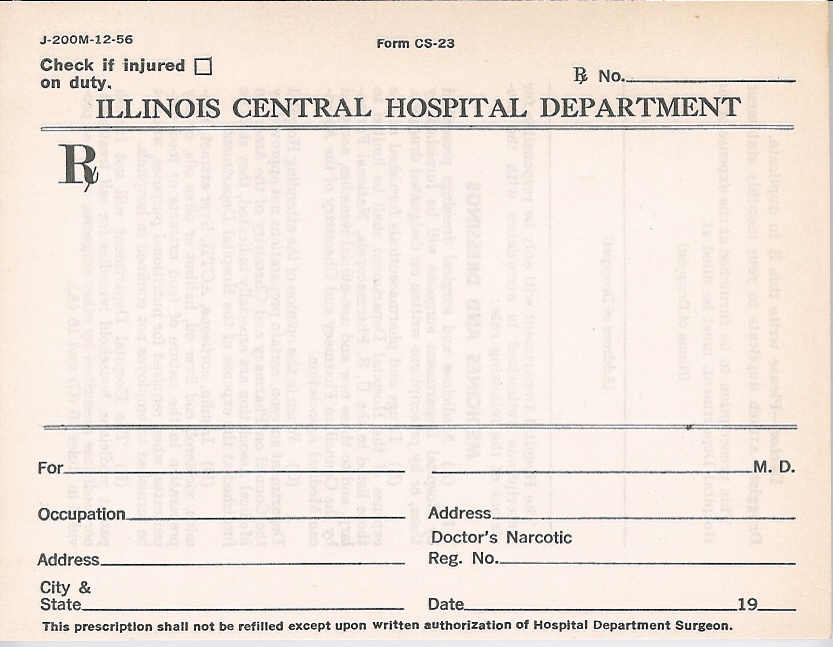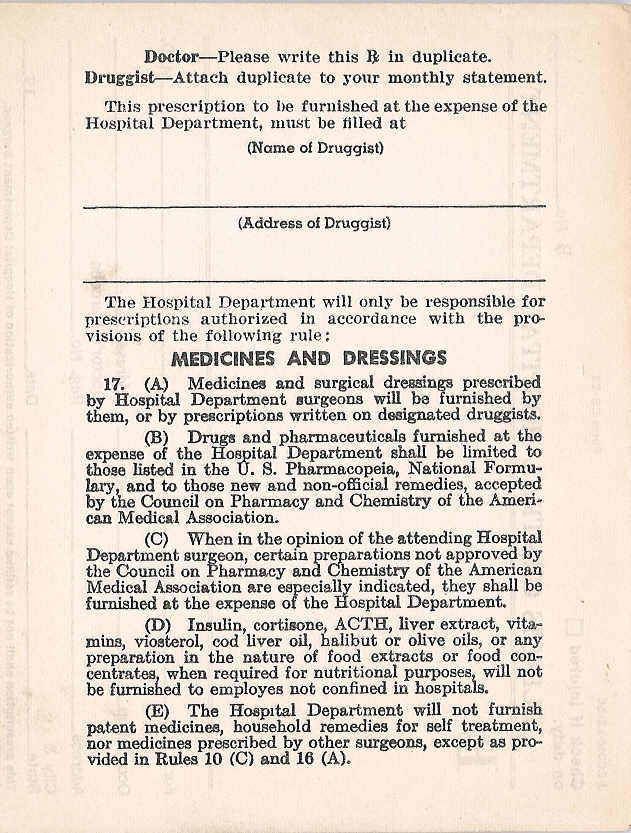Image Gallery 2: Other Images
Doctors’ Emergency Cases
Railway surgeons needed to carry the proverbial black doctor’s bag; several companies advertised their bags and equipment (below). These bags, often called “emergency cases,” allowed doctors to carry essential tools, dressings and medications to the site of an injury.
Source: The Railway Surgeon 1896;3(6):6 [illus. 1 and 2]; 1895;1(21) [illus. 3]


Dr. Herrick’s Emergency Case


Dr. Clinton Herrick, author of the seminal textbook Railway Surgery, included photos of his own emergency case. Gauze did not come in sterile paper packets at that time. Sterilization was just coming into vogue in medicine. Only a few years earlier, doctors did not even clean their instruments, and they had considered the blood stains on their aprons a prestigious sign of experience. The more progressive doctors made sterile gauze by placing it in glass bottles plugged with cotton, then processing it in their own sterilizers. Below are shown a commercial sterilizer and Dr. Herrick’s more economical (but equally effective) homemade alternative.


Source: Herrick, Clinton B. Railway Surgery: A Handbook on the Management of Injuries. New York: William Wood and Co., 1899
Dr. Herrick also provided a list of items he recommended for an emergency case (below). Doctors still use most, but definitely not all, of these items today. You might be concerned if your doctor brought you a dose of strychnine. Dr. Herrick and his contemporaries used it as a stimulant to treat shock. It is very toxic and now has been replaced by much safer agents.

Hospital Cars
Dr. Herrick shows us this diagram and photos of a hospital car used on the Plant System (a railroad in Florida). The railroad transported this car to the site of an injury so the patient could receive emergency treatment in clean, hospital-quality facilities, well equipped with medicines and sterile supplies. This represented a vast improvement over treatment outdoors or in grimy railroad shops using dirty rags and improvised equipment.


Source: Herrick, Clinton B. Railway Surgery: A Handbook on the Management of Injuries. New York: William Wood and Co., 1899
A medical examination car is preserved at the Pacific Southwest Railway Museum in Campo, CA.
You can see a picture and the history of the car on their website.
Hospital Items


Railroad hospitals often manufactured or packaged their own pharmaceutical products, such as these products from the Southern Pacific Hospital Department, above. They had their own imprinted items such as the sugar packet above, and the prescription bottles and water pitcher below. Some hospitals even grew their own farm products or operated their own dairy facilities.
Source: Author’s photo collection.
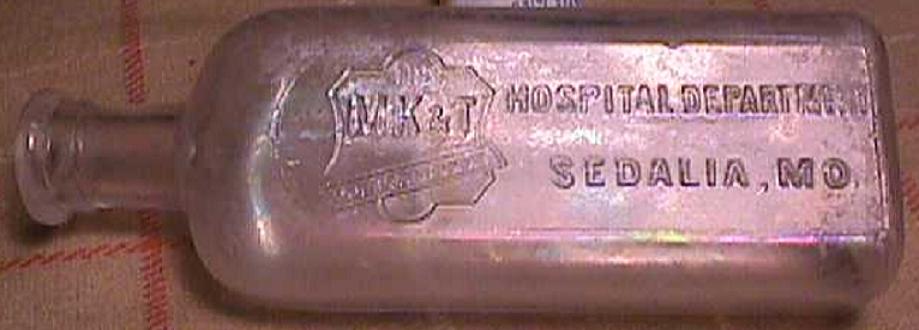
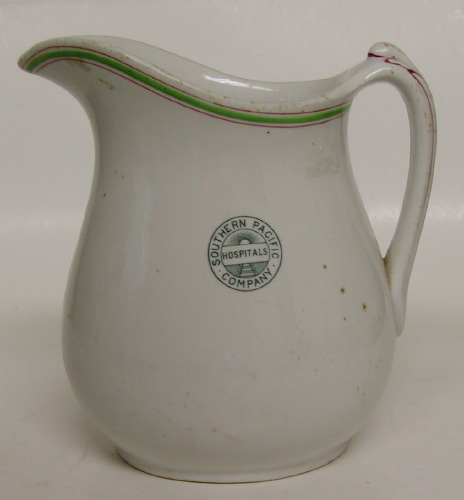
Prescriptions


Doctors are notorious for their difficult handwriting, as shown in this 1946 Union Pacific prescription at left. On the right, the New York Central Railroad gave doctors a little good-natured ribbing with this “prescription” published in The Railway Surgeon in the late 1890s. It’s actually a clever advertisement to entice physicians to ride their trains, suggesting that their highly-touted “Water Level Route” offered a smooth and restful ride. The doctors would recognize the similarity to an actual prescription in its format and use of Roman numerals. It reads:
Rx: The Lake Shore Limited taken regularly on your Eastern trips will prevent that tired feeling so often experienced by travelers. Leaves Chicago 5:30 pm. Arrives New York 6:30 p.m. [Signature] Can be taken without shaking.
Sources: Prescription, author’s
collection;
Advertisement, The Railway Surgeon 1895;1(21):viii.
Below, the front and back of an Illinois Central prescription form
(click on the pictures for larger versions).
The Railway Surgeon


The National Association of Railway Surgeons (logo, above left) started a specialty journal, The Railway Surgeon, in 1894. Below are the first issue and the inside masthead. The journal chose Chicago’s prestigious Monadnock Block office building for its headquarters. Appropriately, the Santa Fe, Michigan Central, and Chicago & Alton railroads also maintained offices there. The building, at 53 W. Jackson, is now a historic landmark, carefully restored. The American Association of Railway Surgeons (logo, above right) became a rival organization, but the two later merged.
Sources: The Railway Surgeon 1894;1(1); AARS logo from Kepner, Raymond B. A brief history. Industrial Medicine and Surgery 1963;32(9):349-50

Associations of Railway
Surgeons
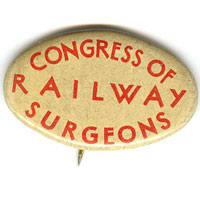
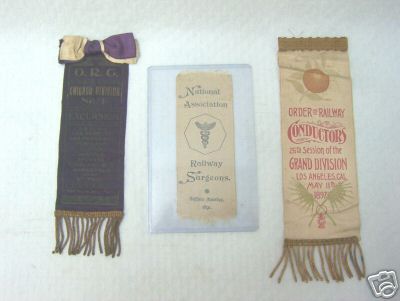
Railway surgeons formed professional associations which met at large conventions. The pin and badges come from such meetings.
Below, a round glass dish with the seal of the American Association of Railway Surgeons. It appears to be an ashtray - not a good idea anymore! On the right is a trophy bowl
from a Southern railway surgeons golf tournament (photo courtesy of Tee Guidotti.)
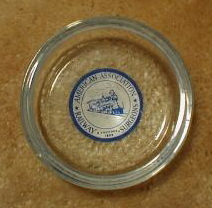
Surgeon's Badge
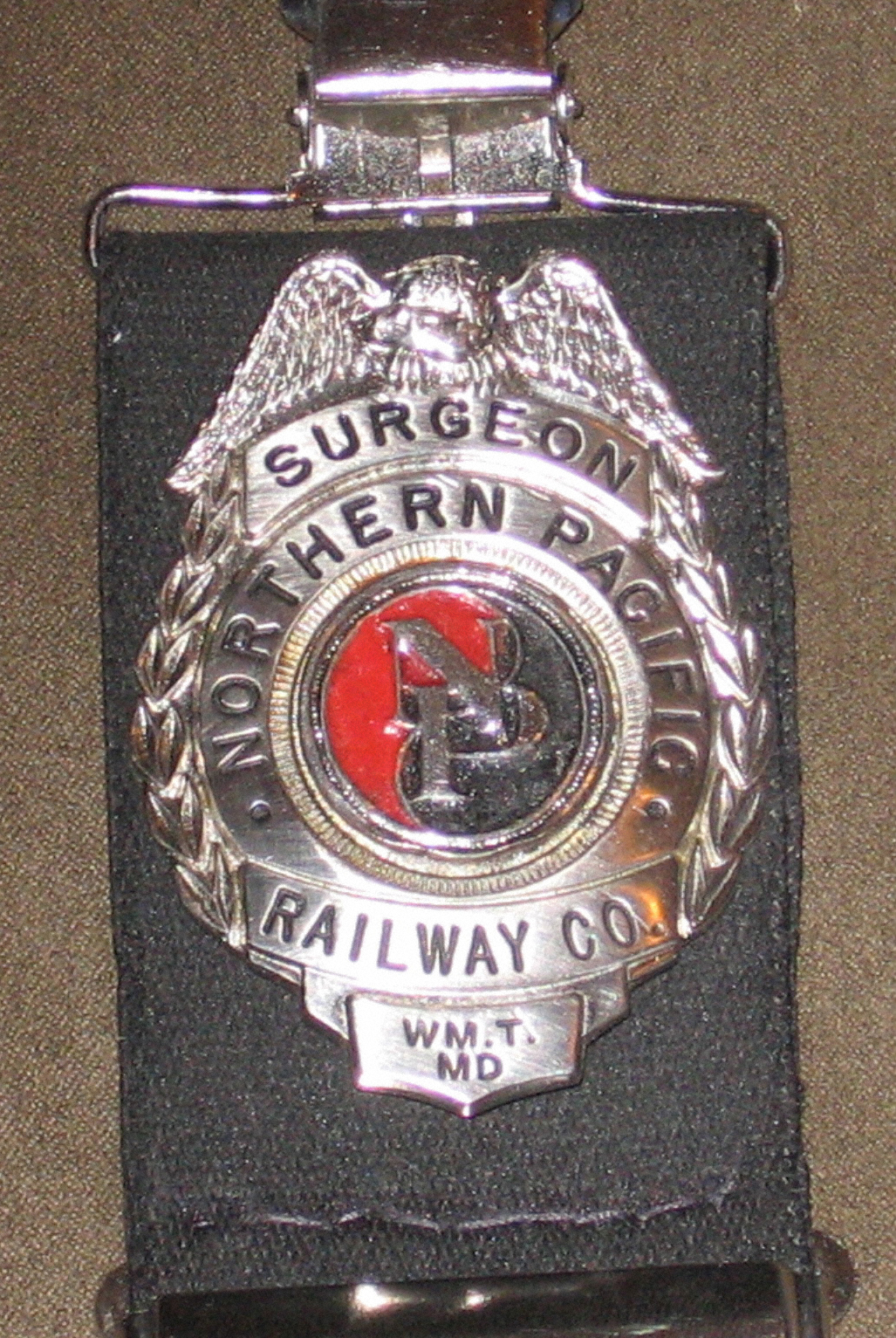
This unusual badge identified its holder as a surgeon on the Northern Pacific. In my research, I have not encountered surgeon badges
on any other railroad. They may have been unique to the Northern Pacific or a few railroads.
Previous: Image Gallery 1 – Hospital Postcards Back to Image Gallery Main Page
Additional images appear on other pages of this website. To avoid redundancy, these are not included in the Image Gallery.
RailwaySurgery.org - Site Map
Home A Brief History of Railway Surgery A Detailed History of Railway Surgery Railway Surgeons and Vision/Hearing Testing
Army Hospital Trains List of Railroad Hospitals Image Gallery Become a Railway Surgeon Archives Where to Learn More About Us/Site News Blog

